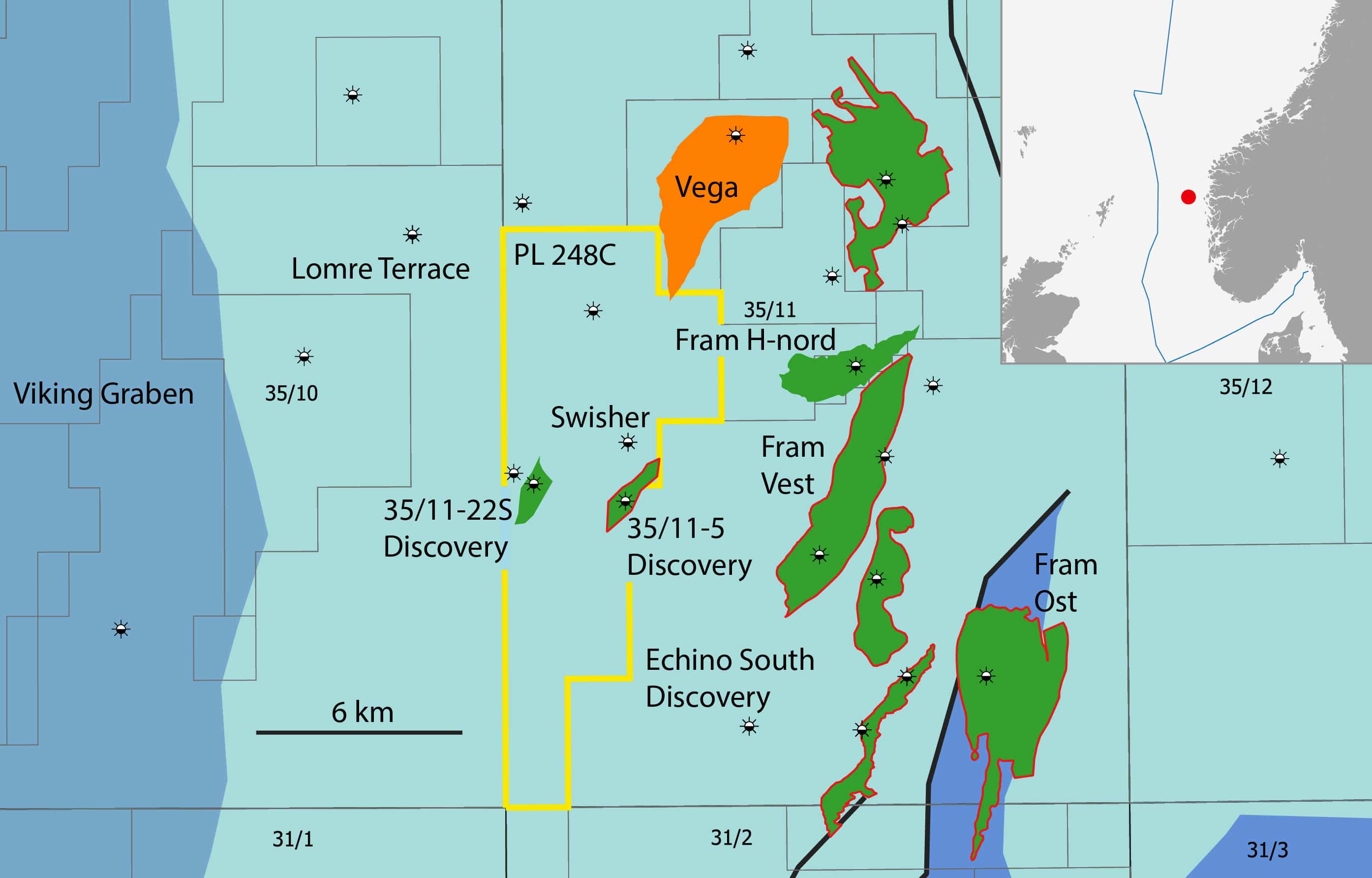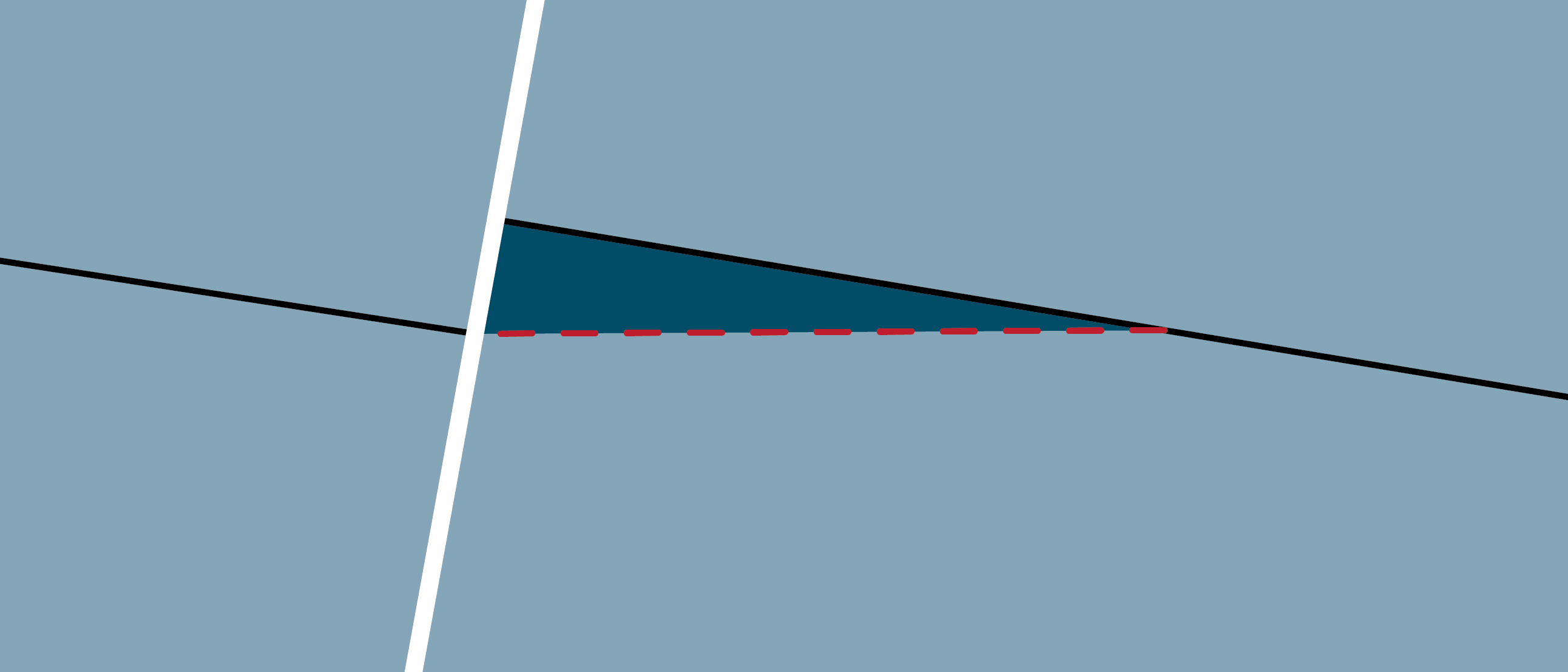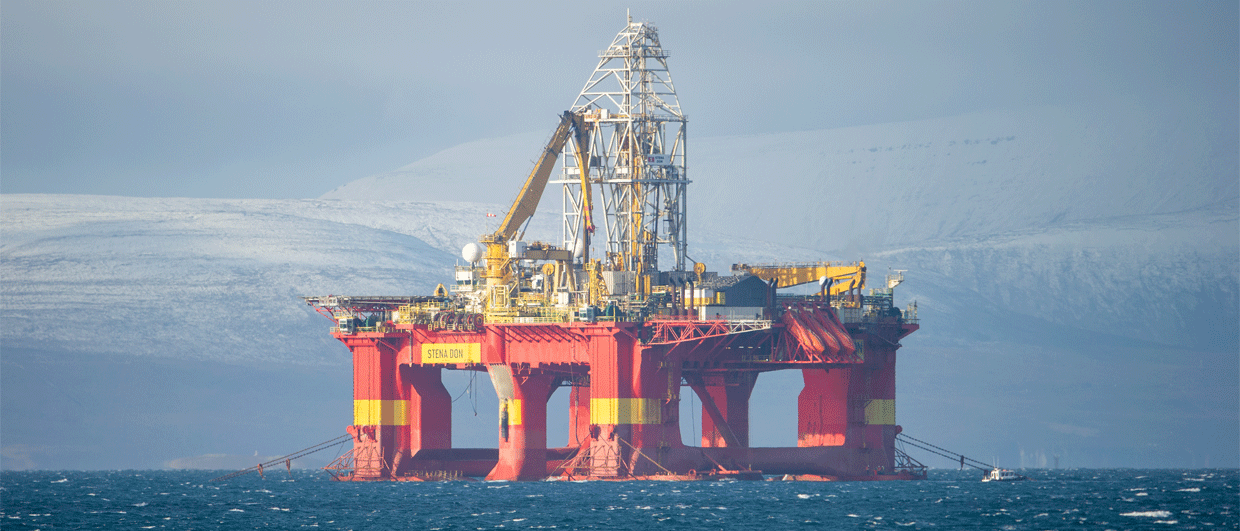On the 13th of July, Equinor Energy AS (35%, operator) and partners Petoro AS (40%) and Wellesley Petroleum AS (25%) spudded exploration well 35/11-24S (Swisher) in the Northern North Sea. The well is being drilled using the West Hercules and is located in Production Licence 248C. The Upper and Middle Jurassic are the most prospective intervals in the area.
The well is located about 7 kilometres west of the Fram field. The oil-water contact (OWC) in Swisher is expected at 2922 m TVD MSL for the first target and 2974 m TVD MSL for the second target. It is thought that sandstones of the Upper Jurassic Viking Group (intra-Draupne) and the Sognefjord or Middle Brent Group are the main candidates for these targets.
This is the fifth well to be drilled in the licence, where so far two small discoveries have been made.
Nearby finds
Well 35/11-5 proved oil and gas in the Sognefjord Formation, but the reservoir quality was poor and consisted mainly of thin beds totalling less than 5 m of net pay. Shows were also observed in the underlying Middle Jurassic Brent Group from 3208 m to 3305 m and light oil/condensate and gas was recovered from an RFT sample taken at 3214 m. However, reservoir quality turned out to be an issue again, with the Tarbert Formation having only 5.4 m of net pay. Also, establishing the gas/-condensate-water contact was difficult because of the poor porosity and permeability throughout the Brent Group.
Well 35/11-22S was completed last year, also drilled by Equinor. The primary Brent Group and Cook Fm target as well as the secondary Statfjord Group target proved to be water-bearing. However, an Intra-Heather sandstone tested oil in a 15-metre thick reservoir. Although the oil-water contact was not encountered, preliminary estimates indicated that the size of the discovery is between 0.2 and 0.7 million standard cubic metres (Sm3) of recoverable oil.
Echino South
Another discovery near Fram was announced last year (Echino South) when well 35/11-23 (operated by Equinor) encountered oil and gas in the Sognefjord Formation as well as in the Ness and Etive Formations of the Brent Group. Both units displayed good quality reservoirs, which added to the excitement of the discovery. Unfortunately, subsequent appraisal well 35/11-23A failed to prove hydrocarbons in the Sognefjord Formation, whilst the Brent reservoirs were not tested. Pre-appraisal well volume estimates were between 6 and 16 million Sm3 of recoverable oil.
Hear more about Echino South at the upcoming NCS Exploration Conference 14-15 October in Stavanger
Fram
The Fram field produces oil and gas from the Brent Group, intra-Draupne Formation marine fan sandstones and shallow marine Sognefjord Fm sands. The field consists of four different pools, of which Fram Vest and Øst are the most important. Fram Vest started production in 2003 and Fram Øst in 2006. Original recoverable reserves from Fram were 42.4 million Sm3 (oil) and 17.4 million Sm3 (gas), of which 5.5 million Sm3 (oil) and 10.5 million Sm3 (gas) remain.
Migris, the company that describes and reduces geological and economical exploration risk by simulating geological processes and visualising the results in interactive 3D-models, predicts the Swisher well to be a class A well with flowrisk value of 99% for the Upper Jurassic and 83% for the Middle Jurassic.
HENK KOMBRINK





